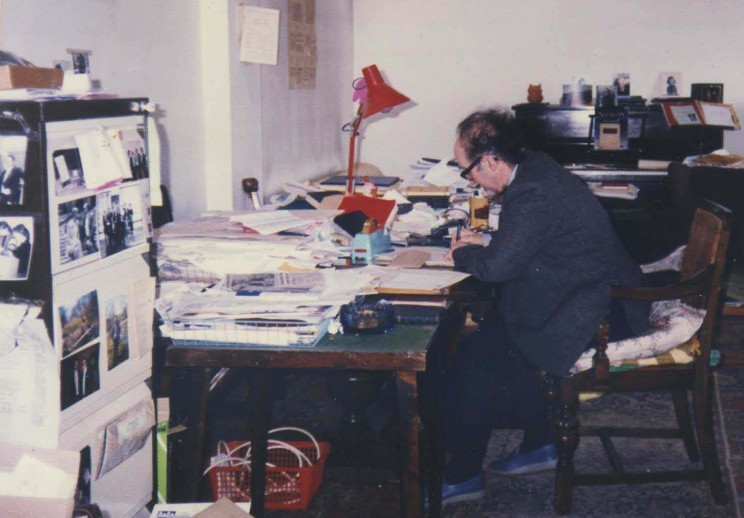
During ROCO concerts, listeners might encounter composers they’ve never heard of. Part of the River Oaks Chamber Orchestra experience is to discover exceptional music that doesn’t get love in mainstream programs.
A works by Welsh composer William Mathias will be featured in the upcoming ROCO Brass Quintet concerts on Jan. 27 at MATCH and Jan. 29 at The Woodlands United Methodist Church. Mathias was born in Whitland, Carmarthenshire. A child prodigy, he started playing the piano at the age of three and began composing at the age of five.
ROCO Brass Quintet French horn Gavin Reed gives us more insights about the composer and his brass quintet composition.
Q: For us Houstonians, it’s funny that someone would celebrate summer. In Summer Dances by William Mathias, how is summer portrayed?
Gavin Reed: You’re right about our Houston summers — they’re mostly like walking into a dog’s mouth! Although I’m sure Mathias’ Welsh summers were more pleasant, there is nothing overtly programmatic (story telling) about this piece.
Instead, he relies heavily on traditional British dance rhythms which sound mostly joyful and allow for interplay between the individual dancers — I mean instruments!
Q: We don’t hear much about the works of William Mathias. Why is that?
Gavin Reed: Mathias is more well-known for his church music (particularly choral) than for his concert music. His music can be heard frequently in Houston church services as congregational responses in the Anglican tradition. Although his career was overshadowed by some of his British contemporaries, he did have a piece commissioned for the wedding of Princess Diana and Prince Charles in 1981.
Q: What’s the French horn’s role in this piece?
Gavin Reed: As with so many brass quintet pieces, the role of the horn is a lot like a person with an O Negative blood type — the universal donor. The horn is a frequent partner with the two pairs of instruments primarily featured in the piece — two trumpets and two trombones. At times, the horn is used as the bottom voice of a would-be trumpet trio, or the top voice of a trombone trio. However, the horn’s color is used most often in this piece as an addition to the lush chordal harmonies.
Q: What’s challenging about performing this work?
Gavin Reed: Balance is a concern when performing this piece. The accompanimental chords are rich and beautiful and it’s tempting to play loud enough to cover the solo lines — a no no! In the words of Mel Torme, “Why must you bury the tune?” Intonation is also an important consideration. The chords in this piece often have an added note beyond a simple triad. That makes for musical interest but can also add a degree of difficulty for the performers.
Q: Anything you’d like the audience to know about the work before listening to it for the first time?
Gavin Reed: When hearing this piece for the first time, listen to the chords. They are lush and easy on the ears, but also listen for a special note that’s been added — this seems to define a portion of Mathias’ style.
As with all traditional Western music, follow the melody around the group. Who has it first, second, third? Is there more than one idea happening? Who plays with whom? How do you feel when you hear each movement?
If this is all just too much, be an open listener and enjoy whatever may strike you. Summer Dances, like all great art, can handle your scrutiny or your general impressions. Come to it as you are.
___
The ROCO Brass Quintet presents “Crossing Over the English Channel” on Friday, Jan. 27, at MATCH (special dinner package at Brennan’s available); and on Sunday, Jan. 29, at The Woodlands United Methodist Church.

Leave A Reply